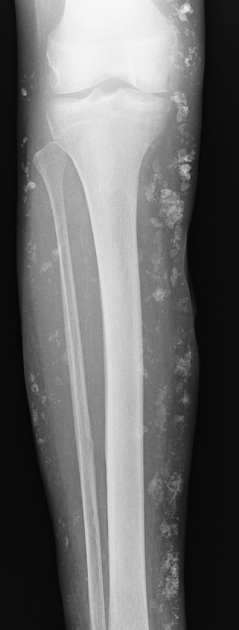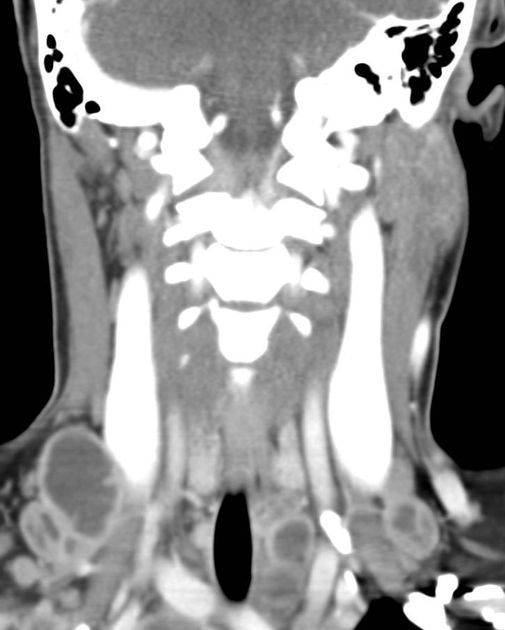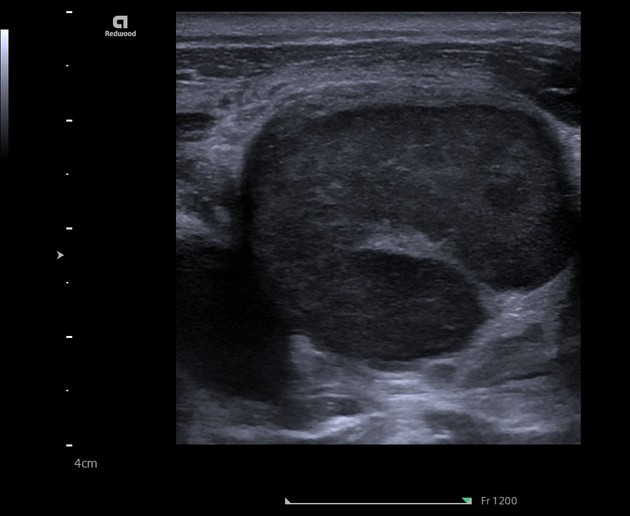Kikuchi-Fujimoto disease (KFD)
Kikuchi-Fujimoto disease, also known as subacute necrotizing lymphadenitis or subacute necrotizing histiocytosis, is an idiopathic disease characterized usually by cervical lymph node enlargement (80%).
Epidemiology
It typically affects young women. Although it may affect any race, there is higher incidence in Asian populations .
Clinical presentation
It usually presents clinically with cervical lymphadenopathy that is sometimes tender. Accompanying systemic symptoms include low-grade fever, night sweats, malaise and joint or abdominal pains resembling a viral illness .
Pathology
The cause is unknown and debated, with both viral infection and autoimmune mediated mechanisms proposed in the literature.
It can histologically be mistaken for systemic lupus erythematosus (SLE). In some cases, patients go on to develop SLE, raising the possibility that KFD is a forme fruste of SLE.
Location
Typically (~80%) a single nodal group is involved, most frequently (70%) the posterior triangle. The nodes are soft and sometimes tender.
Radiographic features
Imaging findings are non-specific and demonstrate primarily cervical nodal enlargement. The modality used depends on the suspected differential diagnoses at the time of presentation.
A review of CT neck findings in patients with Kikuchi disease (n=96) showed :
- homogenous nodal enlargement (83%)
- perinodal infiltration (80%)
- central nodal necrotic change (16%)
Treatment and prognosis
It usually runs a benign course that is self-limiting with most lymph nodes returning to normal size within the first six months of diagnosis.
History and etymology
The condition was first described in 1972 by Masahiro Kikuchi (1934-2012), a professor of histopathology and haematopathology, at Fukuoka University medical school . Ironically, in view of his specialism, his cause of death was lymphoma.
See also
- Kimura disease: painless lymphadenopathy
Siehe auch:
- systemischer Lupus Erythematodes
- zystische Lymphknoten
- Vergrößerung der zervikalen Lymphknoten
- Kimura disease
- Iso-Kikuchi-Syndrom
und weiter:

 Assoziationen und Differentialdiagnosen zu Kikuchi-Fujimoto disease:
Assoziationen und Differentialdiagnosen zu Kikuchi-Fujimoto disease:


